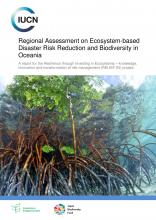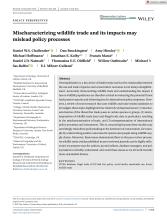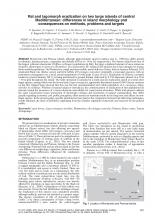Rat and lagomorph eradication on two large islands of central Mediterranean: differences in island morphology and consequences on methods, problems and targets


Island and Ocean Ecosystems, BRB
Available Online
Baccetti, N.
,
Capizzi, D.
,
Cencetti, T.
,
De Pietro, F.
,
Giannini, F.
,
Gotti, C.
,
Puppo, F.
,
Quilghini, E.
,
Raganella Pelliccion, E.
,
Sammuri, G.
,
Sposimo, P.
,
Trocchi, V.
,
Vagniluca, S.
,
Zanichelli, F.
2019
Montecristo and Pianosa islands, although approximately equal in surface area (c. 1,000 ha), di?er greatly in substrate, human presence, vegetation and altitude (650 m vs. 30 m asl, respectively). The former island hosts one of the largest yelkouan shearwater (Pu?nus yelkouan) populations in Italy, the latter a depleted remnant of once numerous Scopolis shearwaters (Calonectris diomedea). Two consecutive EU-funded LIFE projects have been designed to protect these seabird populations. On Montecristo, rough and inaccessible, aerial delivery of toxic baits in January-February 2012 eradicated black rats (Rattus rattus) and feral rabbits (Oryctolagus cuniculus) (originally a non-target species), with no permanent consequences on a local, ancient population of wild goats (Capra hircus). Eradication on Pianosa, currently underway (started January 2017), is being performed by ground baiting, delivered by 4,750 dispensers placed on a 50 m × 50 m grid throughout the island. The latter operation is included in a multi-species eradication aimed at several other target species, among which was the brown hare (Lepus europaeus), apparently introduced around 1840. Genetic analyses on the ?rst trapped hares showed that this was the last uncontaminated and viable population of L. europaeus subsp. meridiei in existence. Whether of natural origin or introduced, the commencement of eradication of this population has instead created the awareness of a taxon otherwise unavailable for conservation elsewhere. While both projects address the same conservation issues (protection of shearwater colonies and restoration of natural communities), they di?er greatly regarding economic cost, public perception, e? ort needed to maintain results in the long term and e?ects on non-target species. In the present paper, speci?c attention has been paid to the comparison between bait delivering techniques, results obtained, the array of problems originating from the complex regulatory framework and reactions by the general public.









